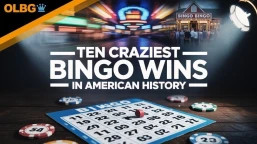
With 30+ years in racing and betting, Darren helps punters develop their skills. As OLBG’s Tipster boss and expert guide, he turns insight into winning strategy.
The Next Stage
Over the last 3 blogs, it is hoped that you have become familiar with the basic concept of laying.
Further reading is available on the advanced laying and exchange article at the betting school.
That being the case it is time to look out for ways to put these skills into practice.

Older members of the betting public will be able to remember life without exchanges, where the main option was whether to place a bet with a mainstream bookie or a small independent firm.
People not much older than myself will be able to remember the situation before high street betting shops were made legal.
The choice was to place the bet with the local publican, hairdresser, or butcher: in fact, anyone who had an account with a bookie and you could trust (both with your money and not to get busted by PC Plod ).
The advent of the exchanges meant a big shakeup.
Punters could now become ‘ legal bookmakers ‘ without applying for premises or a licence!
No doubt there was plenty of carnage as these ‘ new wave ‘ bookies fought for the hard-earned cash of the old school punter.
There would have been many who thought that just taking bets was a sure way to a fortune, but they would have been in for a shock.
Professional bettors now had a new golden goose to fleece, not to mention the genuine punter who just liked the look of the new odds and wanted some action.
Now there is more of a pattern to how a market is formed and I shall use a mythical race as an example.
Markets for the following day are put up the day before racing and a market will start to form.
Maybe you think Happy Hour should be about 2/1 and want to lay it at that price yet it opens up with one punter offering to lay it at 6/4 and another offering to back it at 5/1.
You will of course have heard talk of everything has its price, well this is it in action. It is haggling or bartering by another name.
The odds will merge over time until the back and lay prices are virtually the same, with the lay price always slightly higher.
You may even have been part of this process.
Say you wanted to lay Happy Hour at around 2/1, instead of laying it at the 5/1 currently available, you can make a counteroffer ( undercut that price ) and offer to lay it at 2.60.
You will probably not get matched at that price as someone may then offer to lay it at 2.70.
Whilst this is unfolding a similar thing will be happening to the 5/1 price.
As someone says they are prepared to back it at 5.50 rather than 6.00 that becomes the new price at which you could definitely lay it but of course you feel the odds are still too high.
It is important to point out at this stage that when you place a lay request ( the 2.60 here ) it will appear on the back side of the screen.
This is because the option is there for SOMEONE ELSE to back it.
The same principle applies if you wish to back something, the request will show up on the lay side as you want someone else to lay it. Once someone has accepted your bet, or you have accepted theirs, the odds will continue to move as they do on the bookmaker's boards at the track.
That may or may not be in your favour.
This can lead to a situation where you could now back Happy Hour at a bigger price than you laid it, meaning you would put yourself in a position to win money whether the horse won or not. Unfortunately, the opposite may happen and you are faced with a different choice.
That however is basic trading rather than pure laying, so to avoid confusion it will be left at that. The other topic I shall cover in this article is laying more than one horse in a race. ( I did touch on this in part 2, but now is the time for a more detailed explanation.
Laying Calculations
Firstly something easily understood by all.
If you put £10 to win on a horse at 6/1 and it wins, you are happy because you have won 6 times the amount you risked.
The bookmaker or punter on the exchange risked 6 times your stake when taking the bet.
You are now going to act as that bookmaker.
The important part is understanding that other than when laying odds on favourites you will stand to lose more than you can gain when laying a single horse in a race.
One way to offset that is to lay more than one, but a little arithmetic ( or a calculator/spreadsheet) is involved.
There are now many 'free to use' Dutching calculators available online.
Did you love simultaneous equations at school? I thought so!
To lay more than one horse so you win the same amount or lose the same amount the method can be a simple form of those dreaded equations.
To lay 2 horses at say 2/1 and 5/1 (having mentally converted them from 3.00 and 6.00 temporarily) you are faced with:
The first step is to find the Lowest Common Multiple ( LCM ) In this case that is 6.
Lay £2 @ 2/1 and you will pay out £6 if it wins.
Lay £1 @ 5/1 and you will pay out £6 if it wins.
You hold £3 of stakes and would pay out £6.
This makes the overall odds EVEN MONEY.
Laying 4 horses ( 13/8, 6/1, and 20/1 twice ) the equation would be:
- Lay £8 @ 13/8 to pay out £21
- Lay £3 @ 6/1 to pay out £21
- Lay £1 @ 20/1 to pay out £21
- Lay £1 @ 20/1 to pay out £21
You now hold £13 to payout £21, odds of 8/13.
Not all calculations are as easy but with practice, you may be able to see odds that are approximate enough to do a calculation speedily.
With decimal odds (3.50 ) it is easier than with standard fractional odds ( 5/2 ) as if Dutching them to have the same overall risk whichever wins, you divide 100 by the decimal odds for each horse and add the figures.
Example: You choose to lay one horse at 4.00, one at 5.00, and one at 10.00 then 100/4 = 25, 100/5 = 20, and 100/10 = 10 totalling 55.
Charts are also available or you can create your own on a spreadsheet.
That means for each £55 you take you will pay out £100 ( a loss of £45 at odds of approx 5/6 ) if ANY of those wins and pocket £55 if NONE wins.
Although you have increased your chances of laying the winner, the lower risk factor would be more to the taste of some.
The other methods are to lay each horse to the same stake ( say £5 on each ) but now you will simply lose more money whenever a bigger priced horse wins and less when a shorter one wins.
Alternatively, you can lay each to lose the same amount ( say £25 ).
For this calculation, simply divide the amount you want to risk by the decimal odds minus 1 ( i.e. for 3.50 divide £25 by 2.50 to give £10 stake ).
Because you have now received a larger stake on the short priced horses, you will lose more whenever a shorter priced horse wins and less when a bigger one wins.
Bear in mind that the more horses you lay in a race, the more chance there is that you will have laid the winner, but you will have limited your liability in doing so.
If that is what you wish to do for the comfort of a lower overall liability, that is fine.



